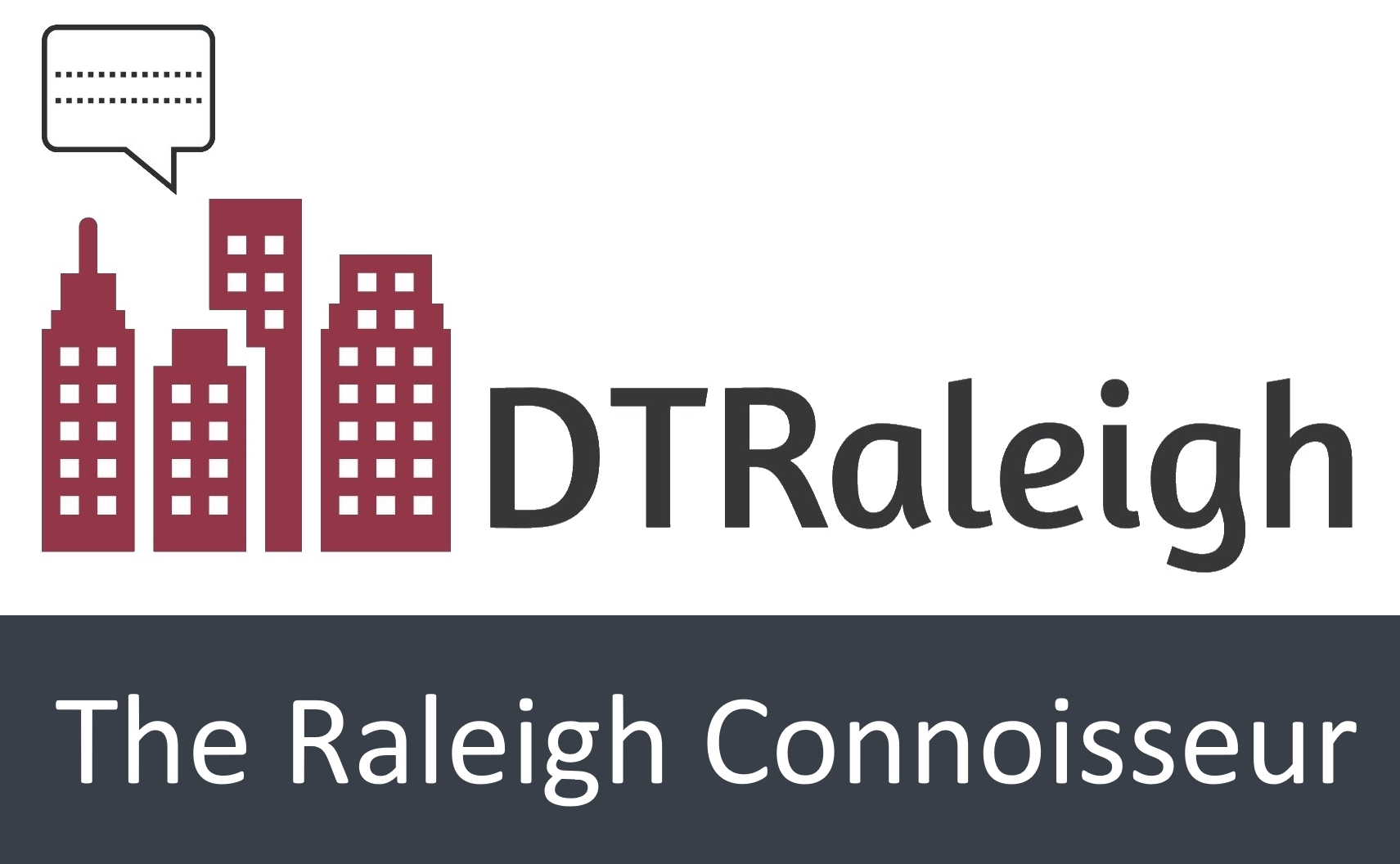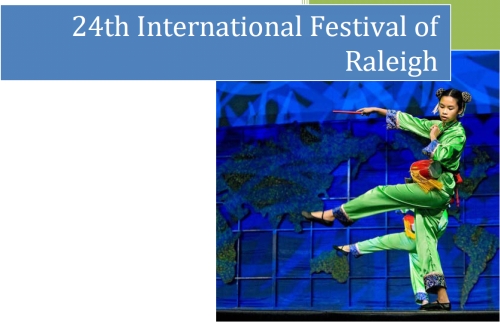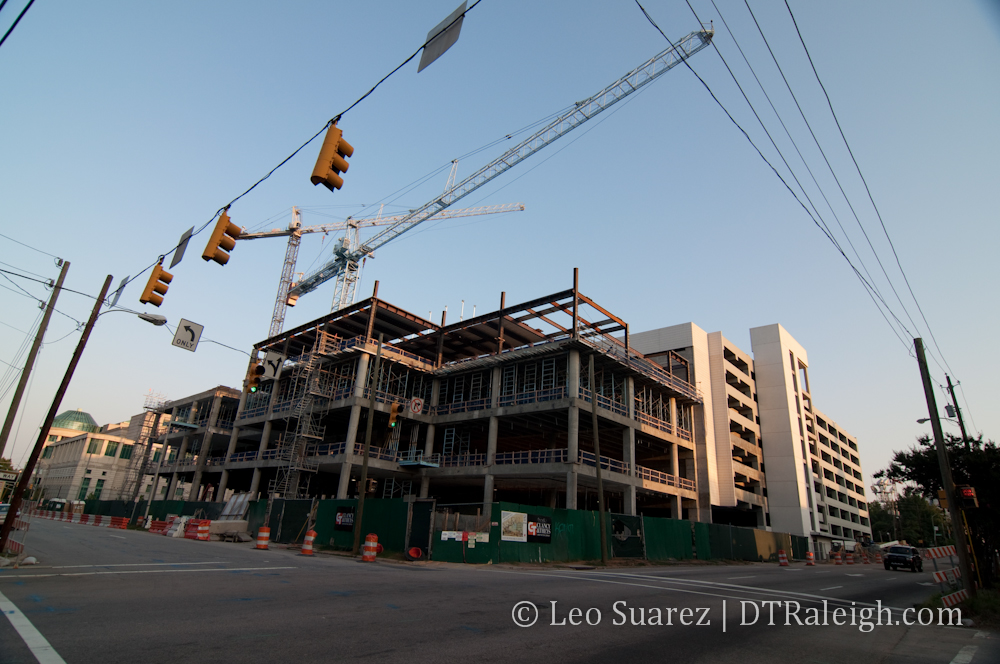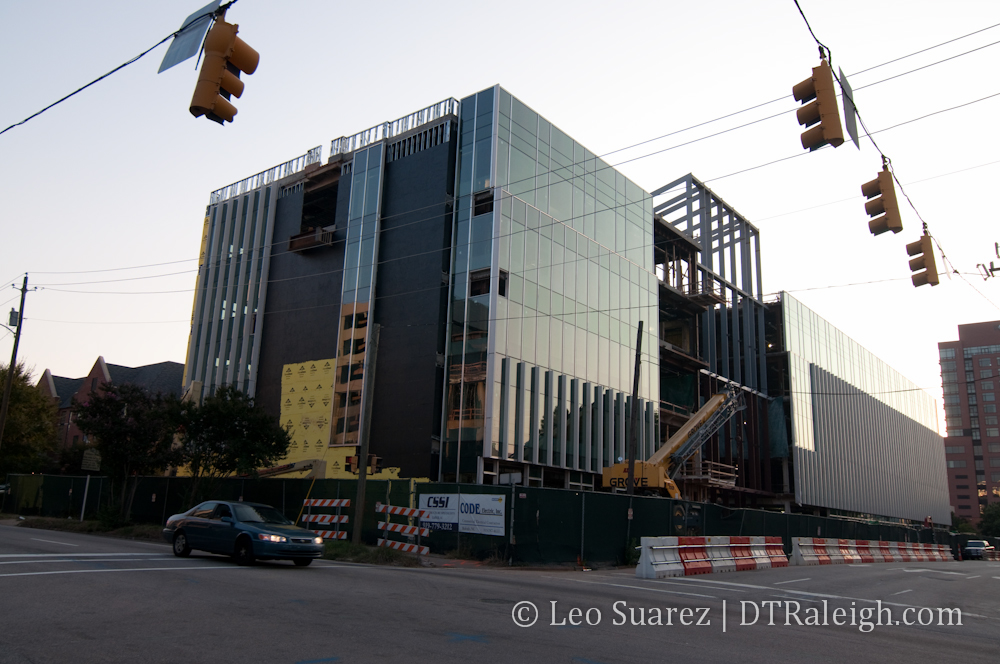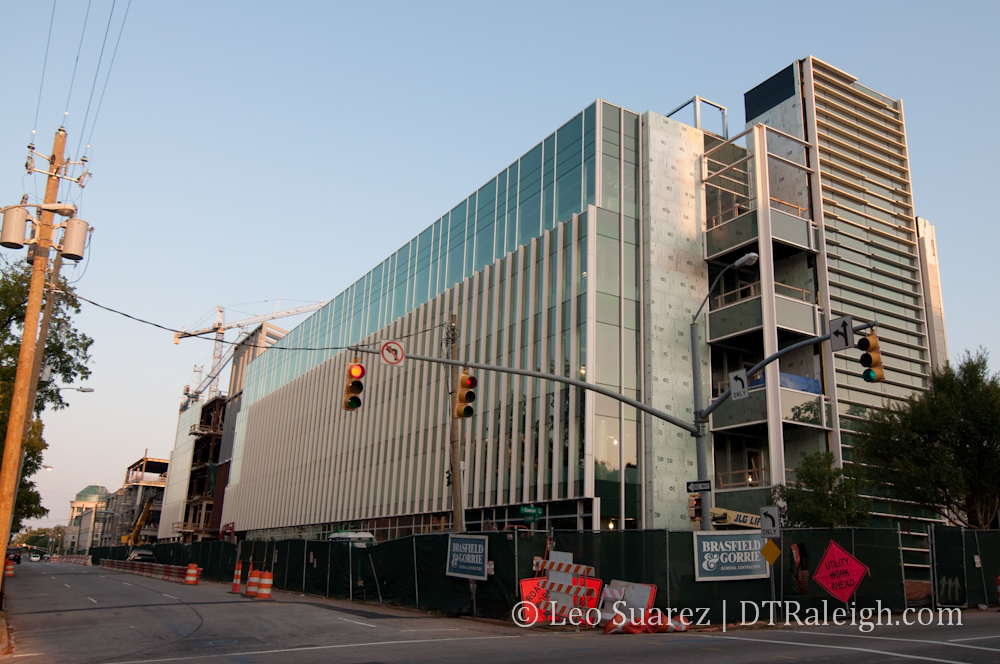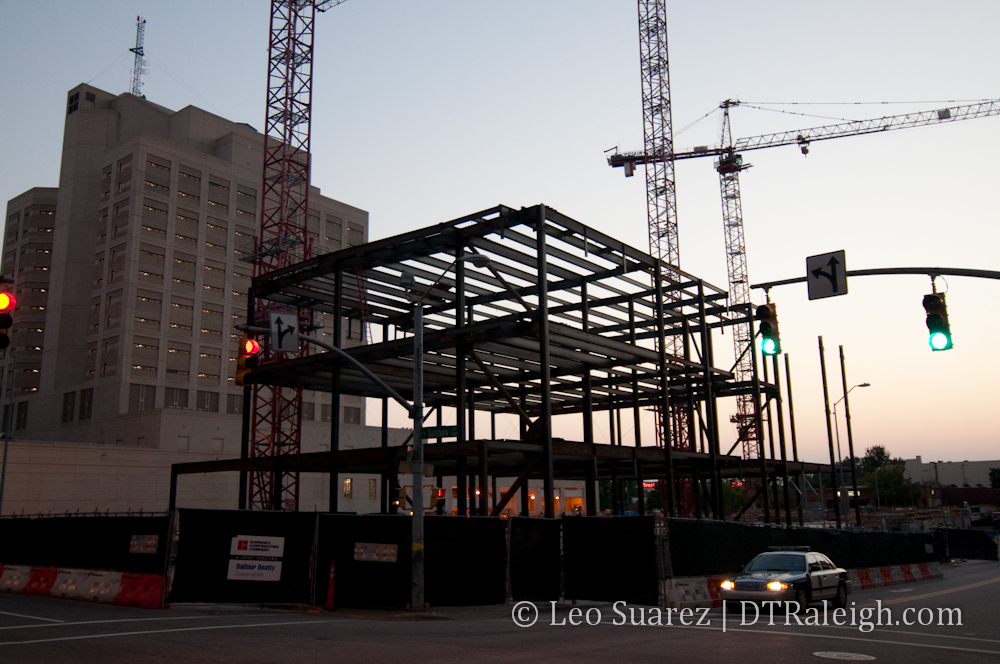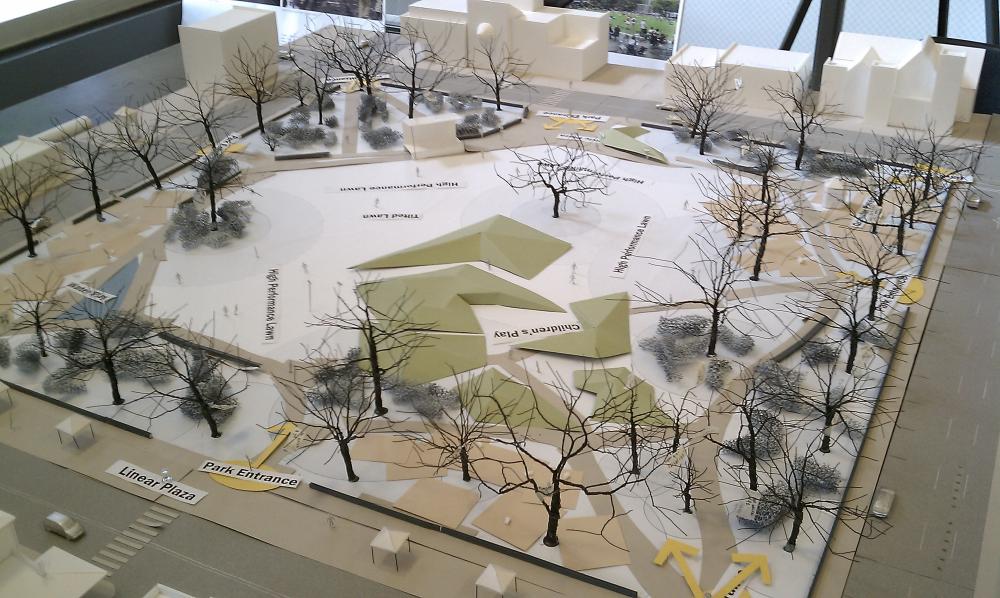
Tomorrow, September 9th, 2010, the city of Raleigh is hosting two workshops on the Moore Square Redesign. This workshop aims at getting your input for the draft master plan that is currently in the works. There are two sessions that you can attend:
- Afternoon session from 1-4 pm
- Night session from 7-10 pm
The workshop will be at Cobblestone Hall, which is located on Wolfe Street, or inside the historic City Market building. Registration is not required so show up to get more details on the project, give your feedback, and gawk at the interior of the City Market building.
You can see some of the winning designs from Chris Counts Studio on Flickr but the current design is slightly different then what you see there. If you take a look at the picture above, that is the model of Moore Square that was shown to us at the Public Leadership Group, which I am a part of.
A new feature for Moore Square will be the large lawn around the center of the square. According to their research, the design firm claims that there is a lot of green space in Moore Square already but with so many paths and mulch, the green space is cut up and divided into small sections. One large, grassy lawn would be more flexible and can allow visitors to take part in more activities.
The design also incorporates some small hills and/or smooth rocks on one side of the lawn. In response to comments about making the square more play-friendly for children, Chris Counts decided to go with a natural playground of hills and, what I’ll call, “natural obstacles” rather then a traditional playground of plastic slides and a jungle gym.
These, as well as more ideas for the square, are still up in the air and public comments are needed to help mold the Moore Square master plan. Tomorrow’s workshop should be a good one.
